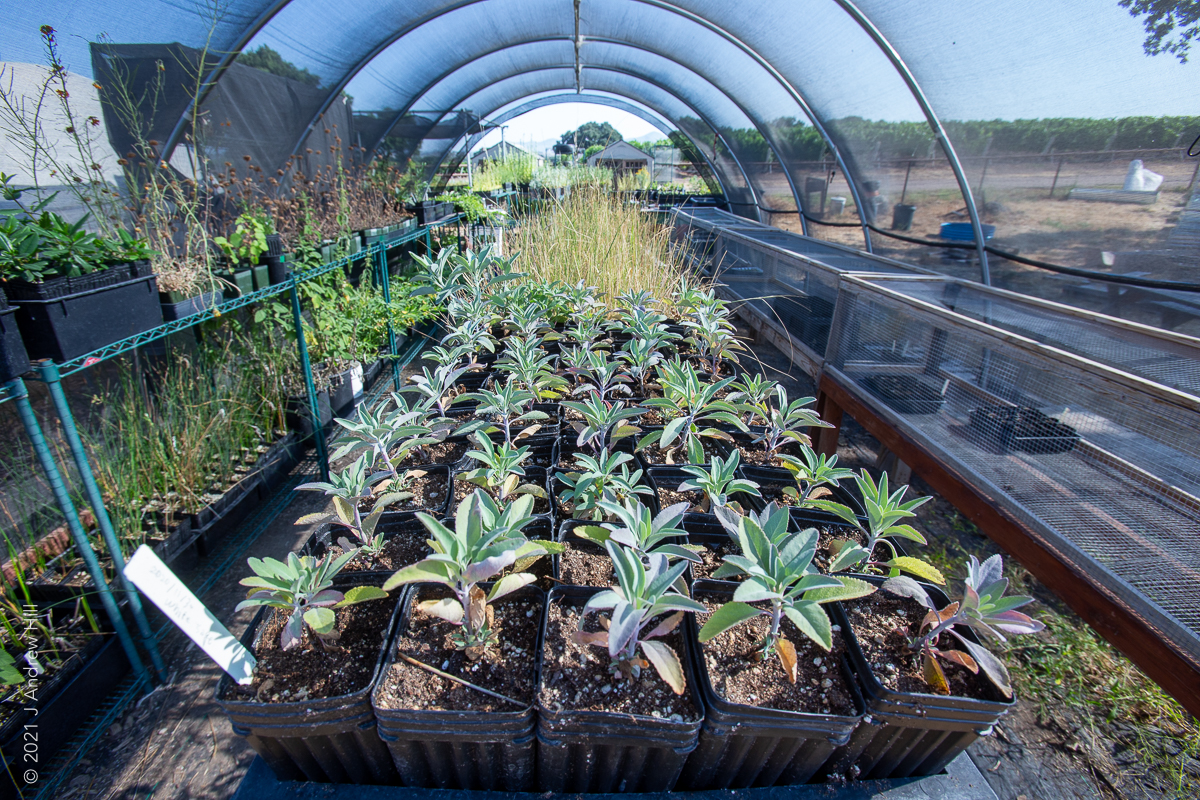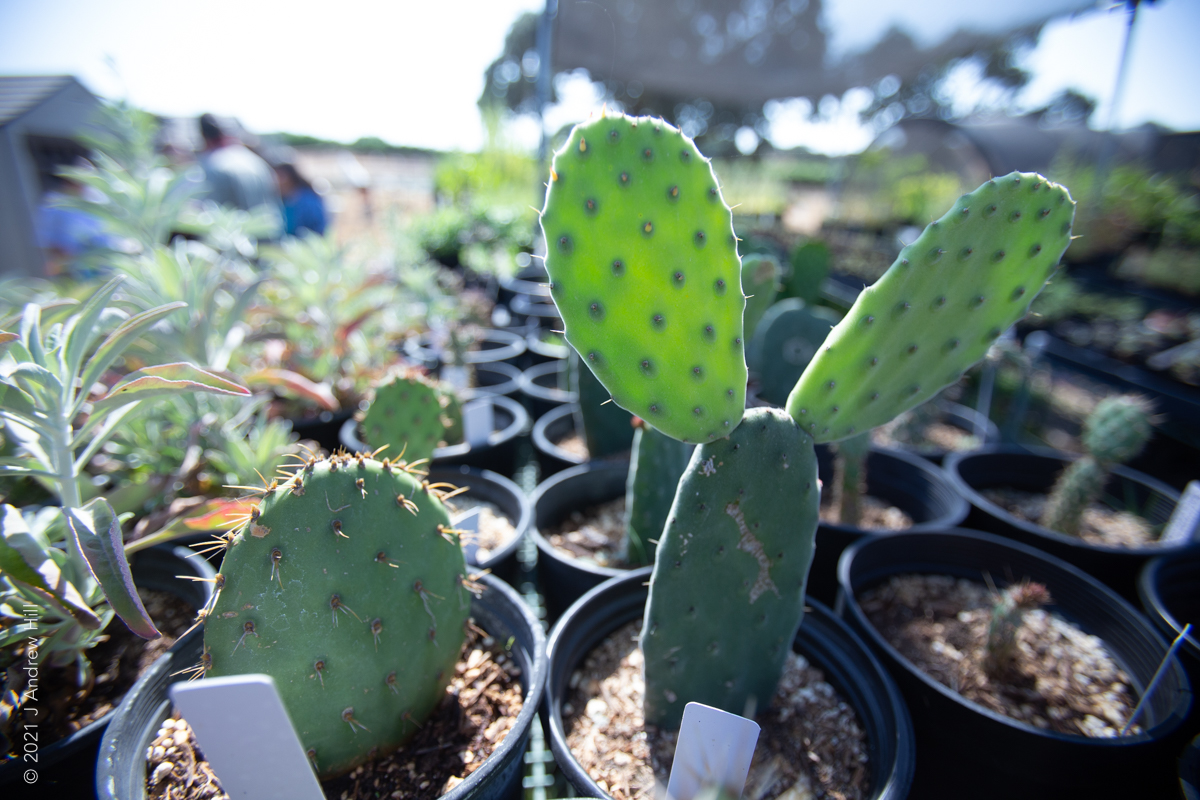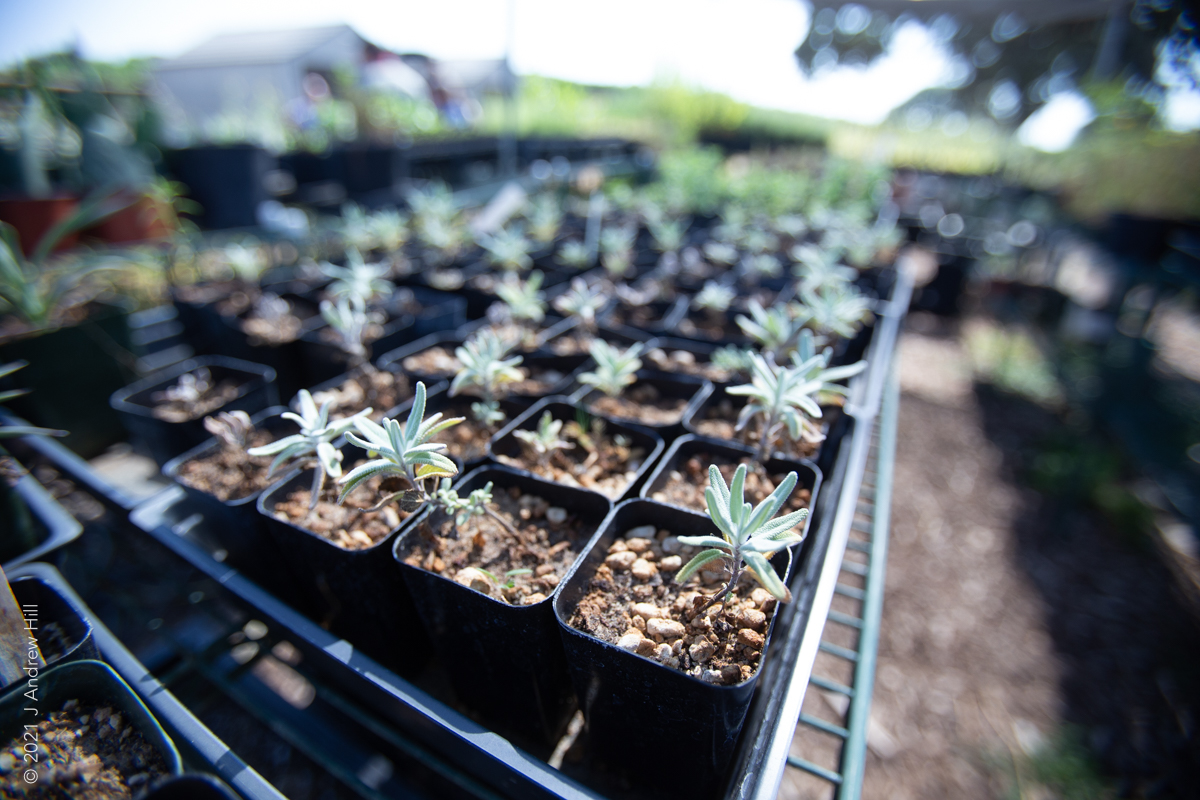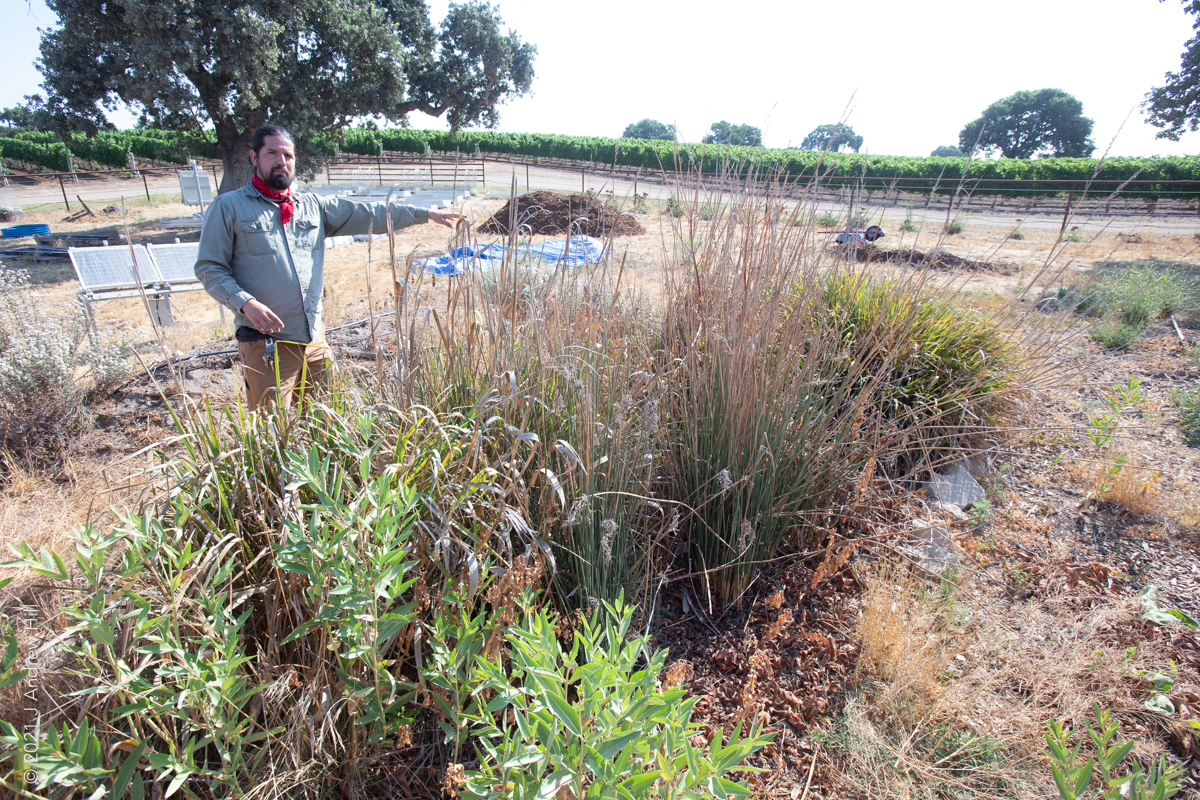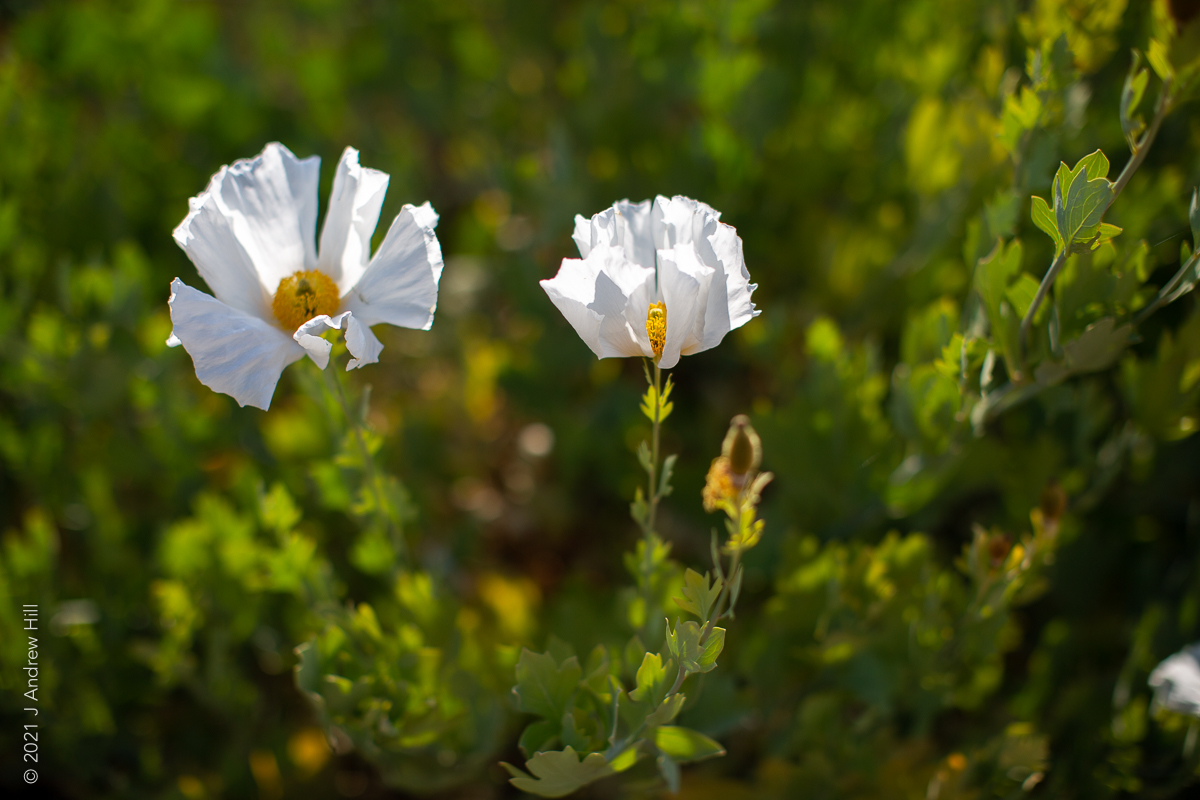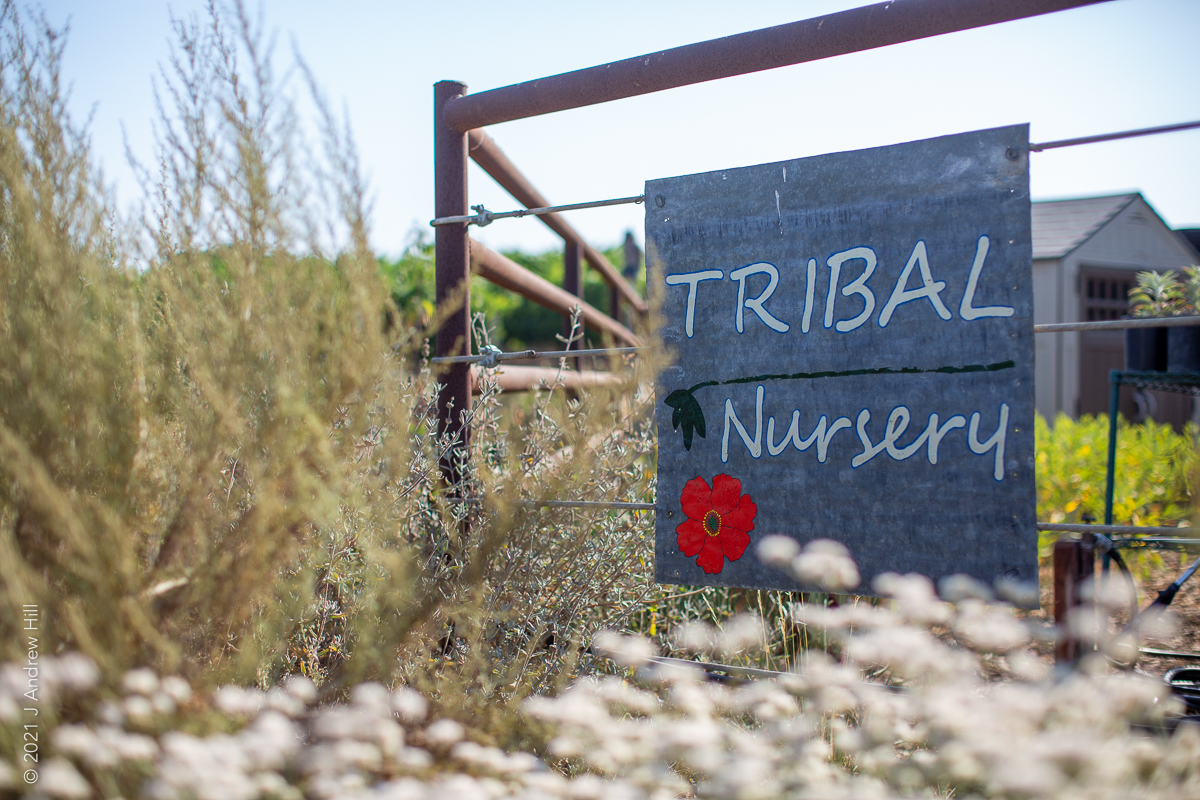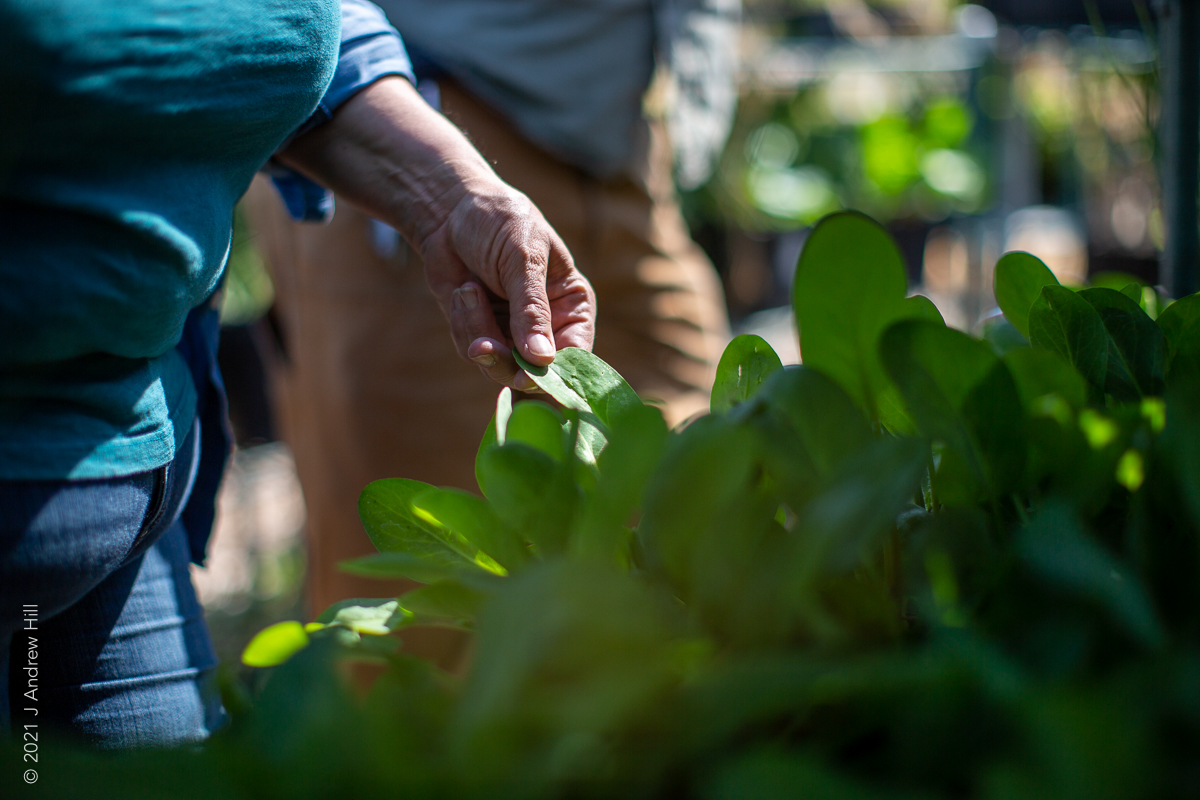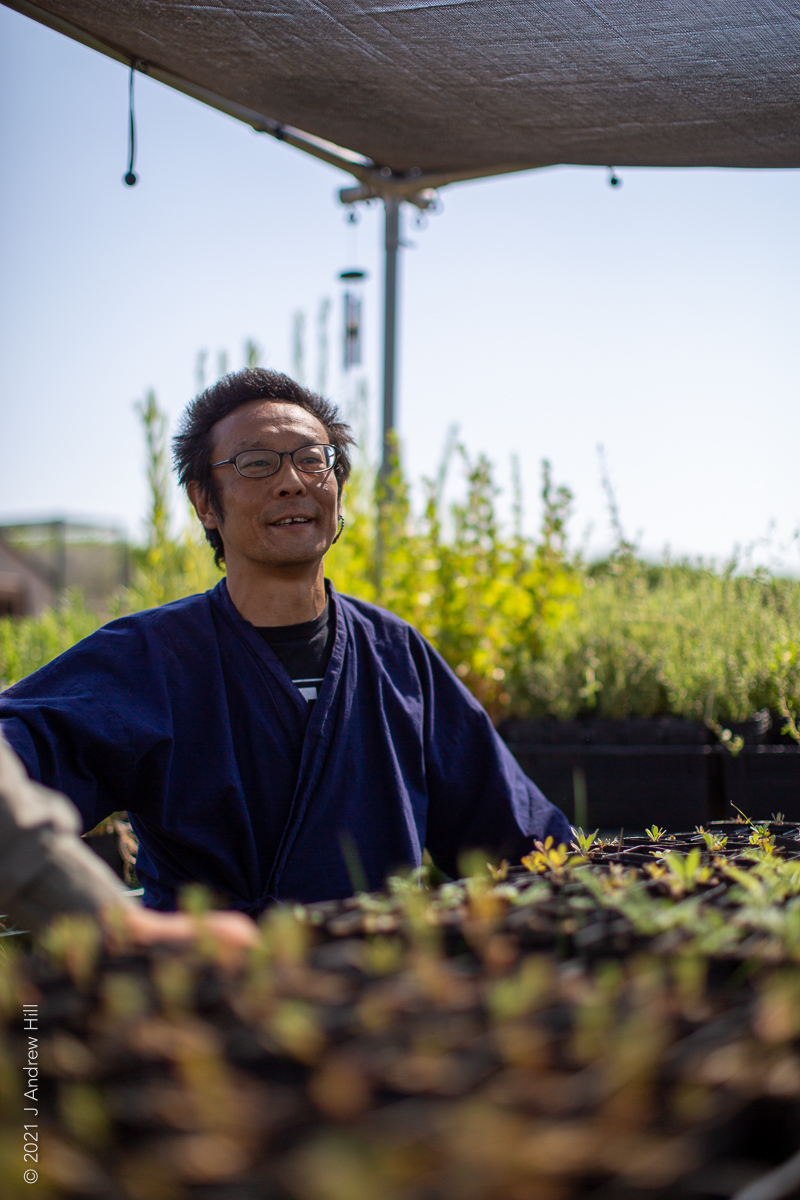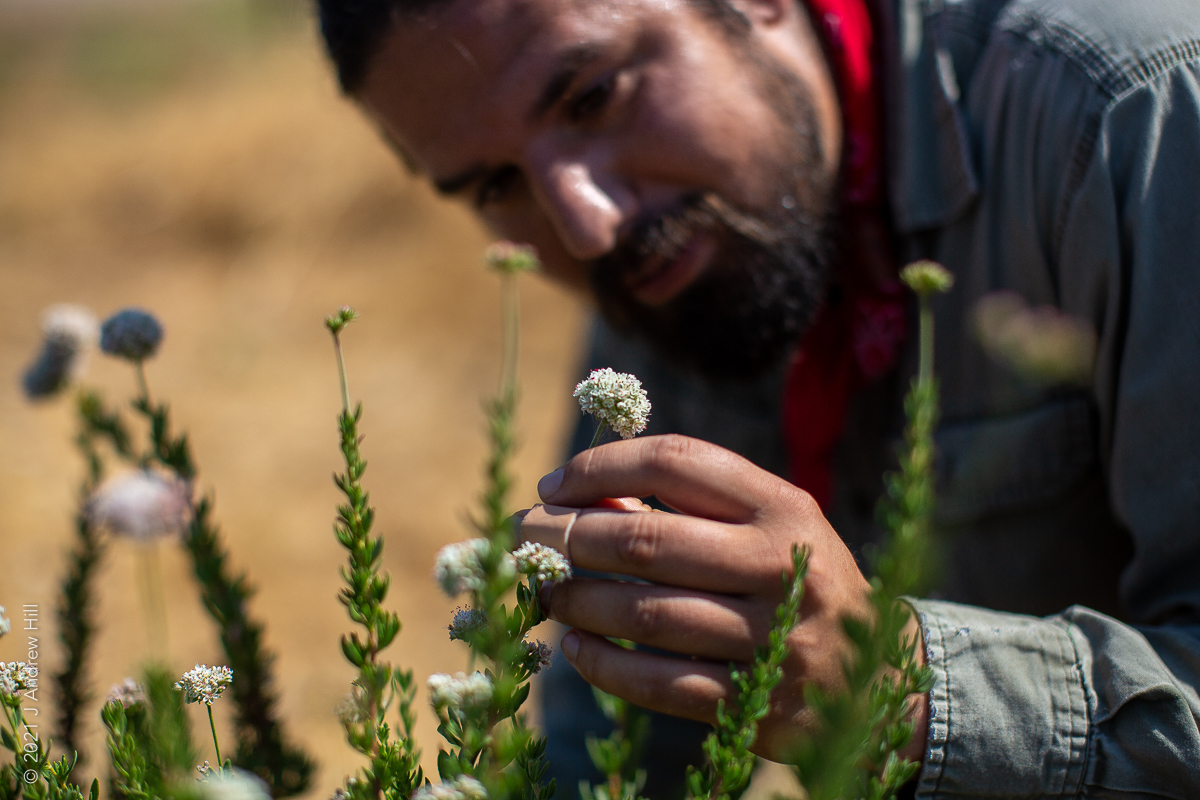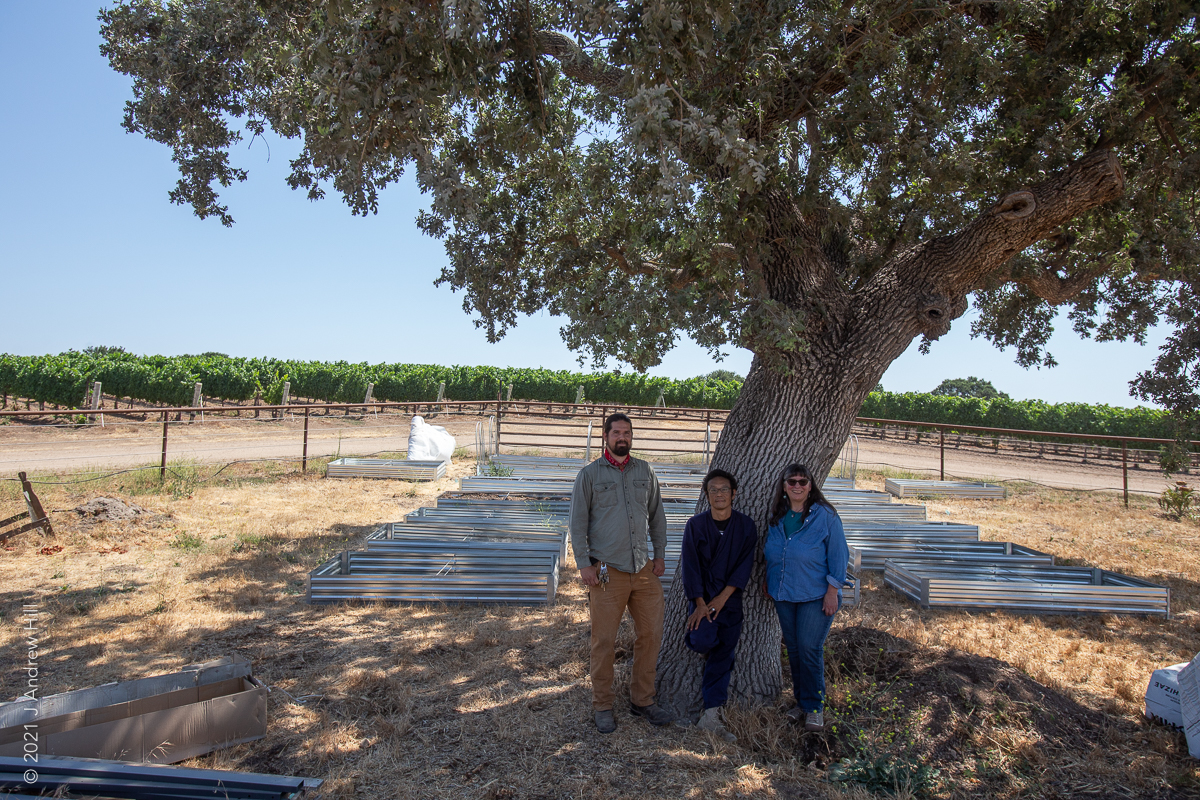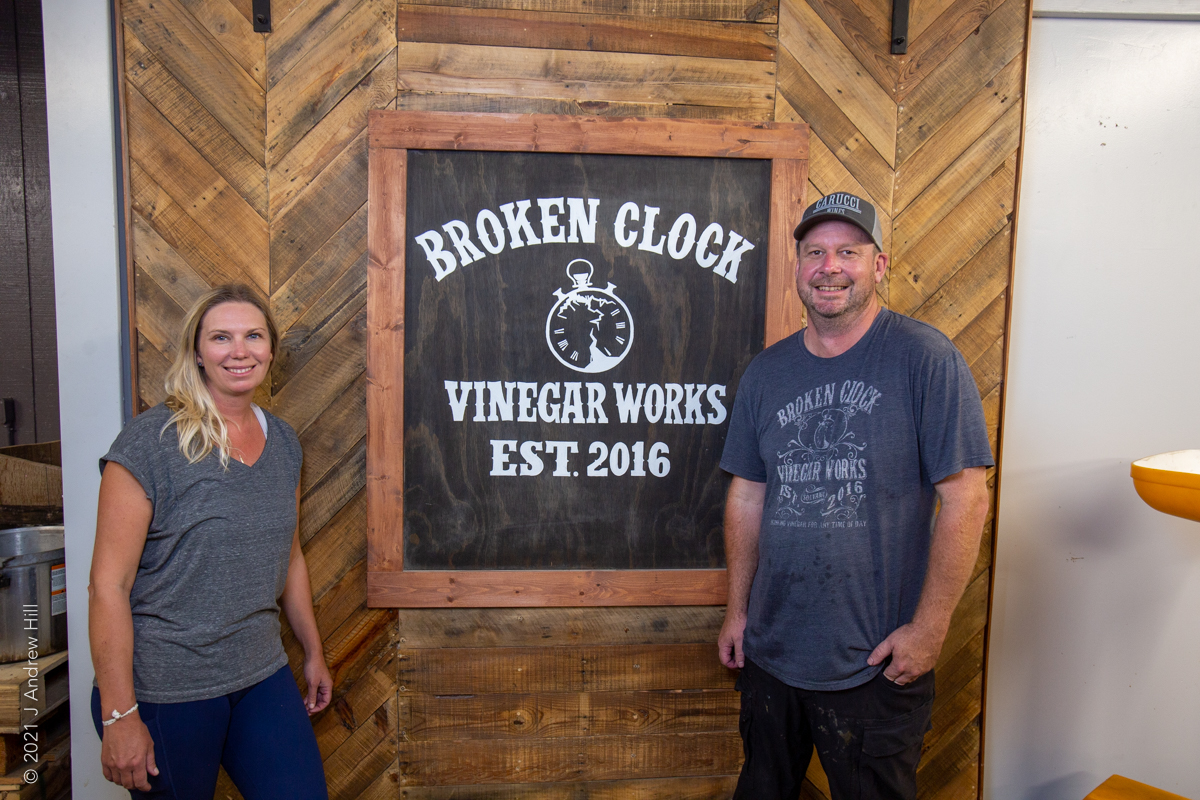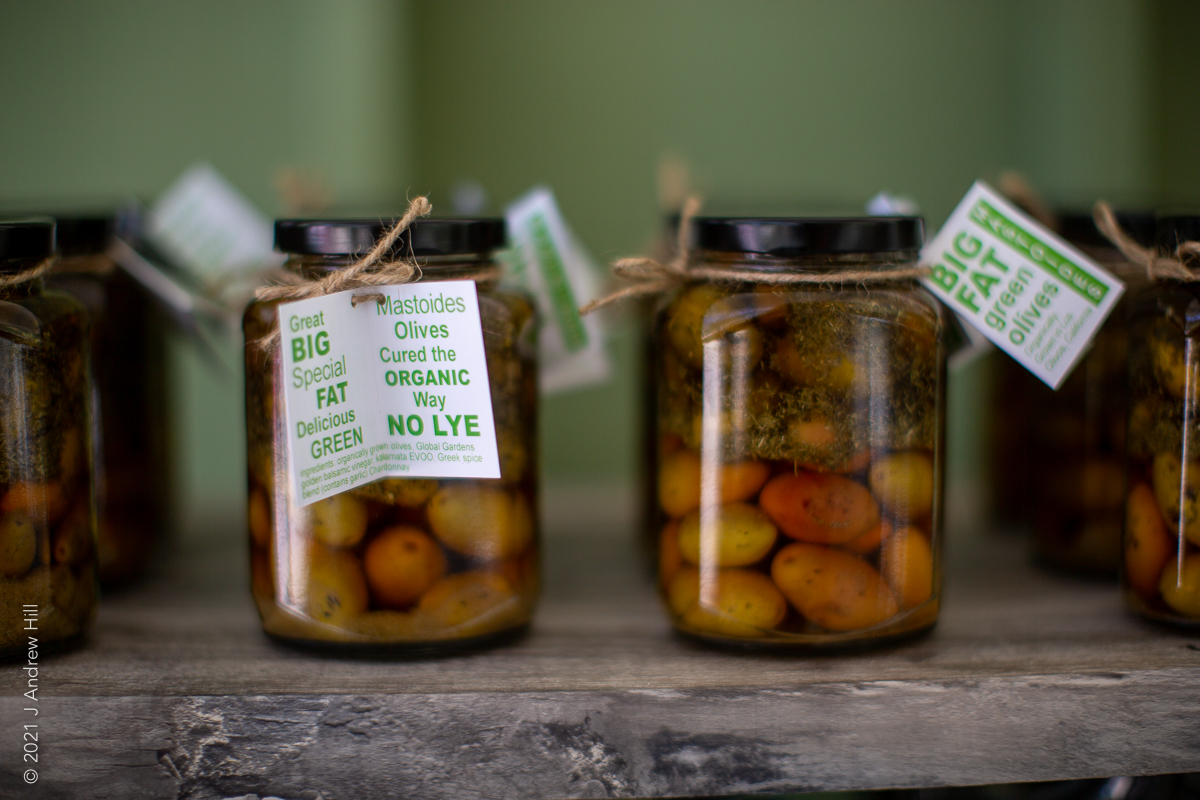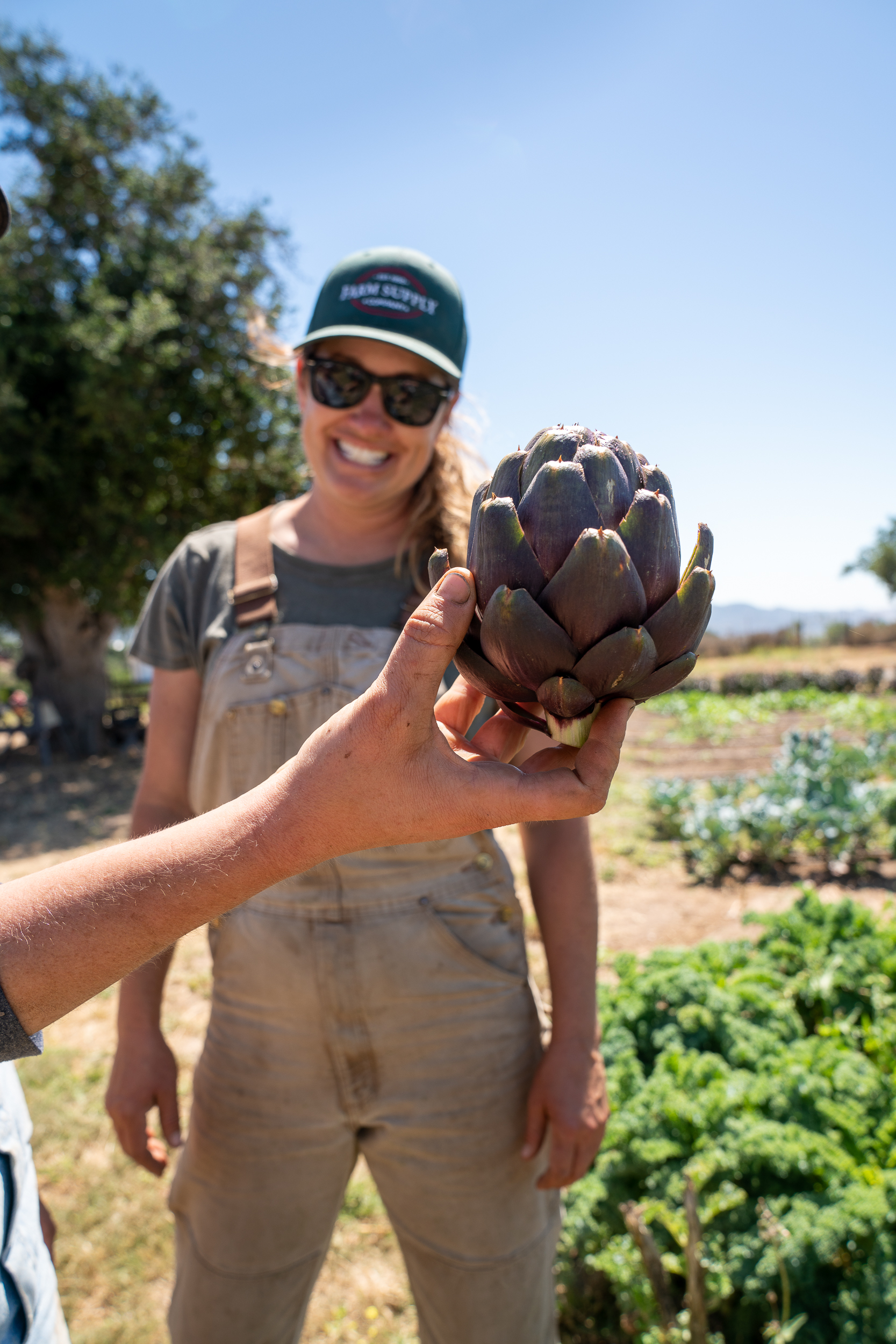Nestled among the vines of the Chumash Camp 4 Vineyard on the eastern most edge of Santa Ynez Valley, the Santa Ynez Chumash Environmental Office (SYCEO) cultivates culturally relevant native plantsNative Plants: A plant that has occurred naturally in a particular region, ecosystem, or habitat without human introduction. for traditional food, medicine, and fiber. The Tribal Nursery is home to more than 60 traditional native Chumash plant species, including Chia Sage, White Sage, Yerba Mansa, Milkweed, Coyote Mint, Hummingbird Sage, Juncus, and Yucca. Many have been driven to the brink of extinction by development and/or are no longer accessible to the Chumash people due to land privatization – but the SYCEO strives to change that.
As SYCEO Environmental Director Teresa Romero notes, “We are producing those plants that are important to the Chumash tribal community so that our people can plant them in their own gardens and have access to traditional plants and medicines.” Using traditional techniques, the Tribal Nursery saves seedsSeed Saving: In agriculture and gardening, seed saving is the practice of saving seeds or other reproductive material from vegetables, grain, herbs, and flowers for use from year to year for annuals and nuts, tree fruits, and berries for perennials and trees. from these hard to find species, cultivates them at the nursery, and encourages the community to help propagateSeed Propagation: Seed Propagation is the method of plant propagation (multiplying, reproducing, or breeding new plants) that is done through the use of seeds. them in their own landscape – on a ranch, in a yard, or even on a patio. In this way, the Tribal Nursery is not just tailoring their offerings to the cultural needs of their community, but they are also expanding food accessFood Access: A person’s ability to access food while considering many barriers such as geography, transportation, availability of healthy foods, and affordability. and food securityFood Security/Food Insecurity: Food security refers to the economic and social condition of reliable access to an adequate amount of food for an active, healthy life for all household members. A household is food insecure when food security does not exist. – and securing food sovereigntyFood Sovereignty: Food sovereignty refers to the right of peoples to healthy and culturally appropriate food produced through ecologically sound and sustainable methods, and their right to define their own food and agriculture systems. for future generations of Chumash Indians.
In addition to preserving foodwaysFood Ways: customs of food production, preservation, preparation, presentation, gathering, marketing, and uses of food products by the diverse peoples and regions of Santa Barbara County., cultivating native plants is vital to the health of regional ecosystems – they are resilient to climate impacts, naturally attract pollinators, require little irrigation, and often thrive in times of drought. SYCEO’s mission to prepare tribal lands for environmental adaptation and to protect and regenerateEnvironmental Regeneration: systems of growing food that reclaim carbon and nutrients on the land by increasing biodiversity, building soil health, and improving watersheds to produce healthier food and lessen the impacts of climate change. natural resources shines through at the Nursery where the focus is on tending and stewarding the plants with intentionality. SYCEO Land Environmental Technician Diego Cordero describes how vital it is to build relationships with native plants because it “allows you to understand the interconnectedness of things and to further develop your relationship with everything else on Earth. You’re actually helping these plants reproduce while getting something back from it.”
Learn more about the Tribal Nursery and watch SBCFAN’s storytelling video below to learn more. The SYCEO offers native plant tours by appointment. To schedule a tour, call (805) 303-7486 or email ascalzo@santaynezchumash.org.
